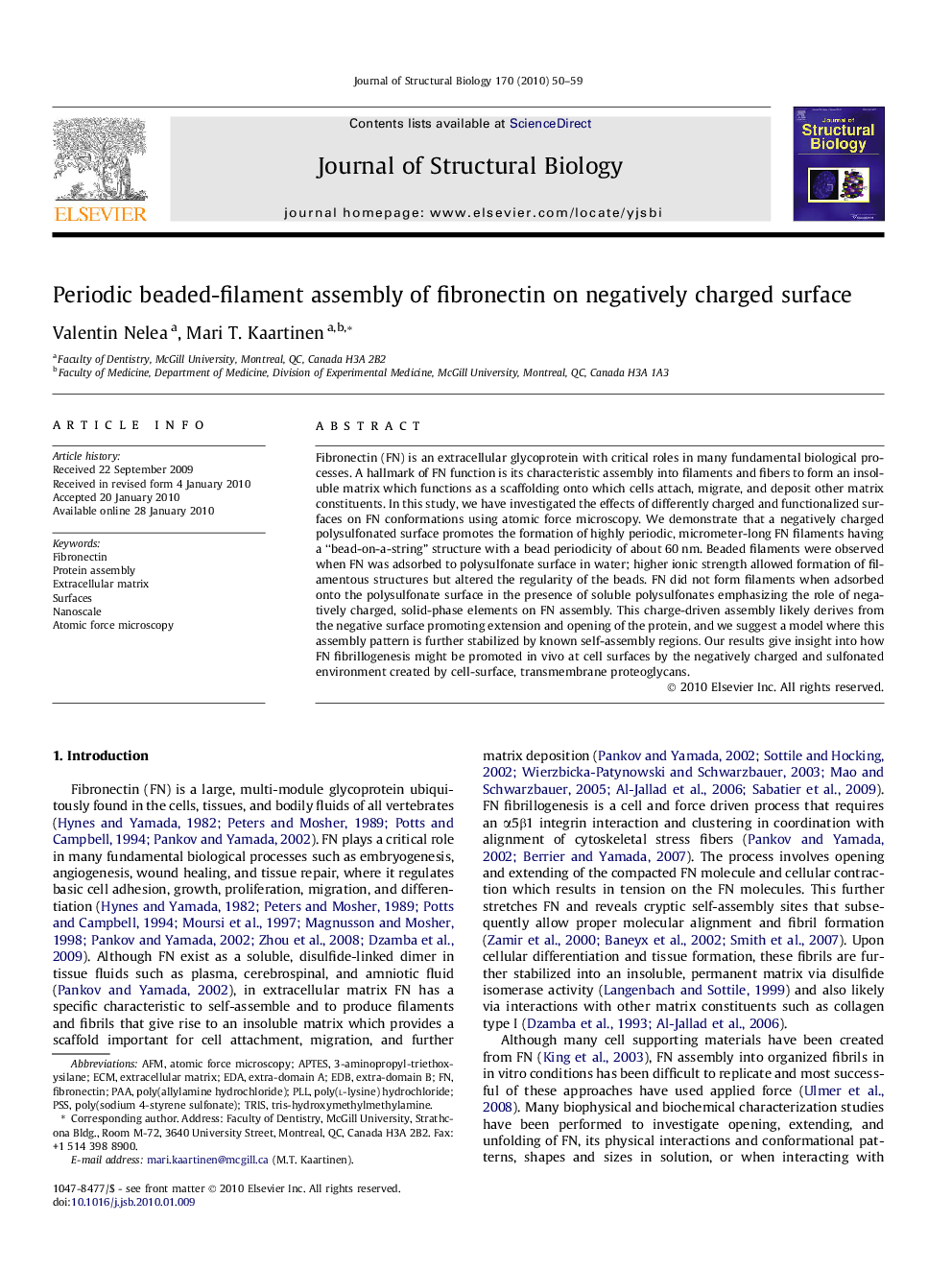| Article ID | Journal | Published Year | Pages | File Type |
|---|---|---|---|---|
| 5915046 | Journal of Structural Biology | 2010 | 10 Pages |
Fibronectin (FN) is an extracellular glycoprotein with critical roles in many fundamental biological processes. A hallmark of FN function is its characteristic assembly into filaments and fibers to form an insoluble matrix which functions as a scaffolding onto which cells attach, migrate, and deposit other matrix constituents. In this study, we have investigated the effects of differently charged and functionalized surfaces on FN conformations using atomic force microscopy. We demonstrate that a negatively charged polysulfonated surface promotes the formation of highly periodic, micrometer-long FN filaments having a “bead-on-a-string” structure with a bead periodicity of about 60Â nm. Beaded filaments were observed when FN was adsorbed to polysulfonate surface in water; higher ionic strength allowed formation of filamentous structures but altered the regularity of the beads. FN did not form filaments when adsorbed onto the polysulfonate surface in the presence of soluble polysulfonates emphasizing the role of negatively charged, solid-phase elements on FN assembly. This charge-driven assembly likely derives from the negative surface promoting extension and opening of the protein, and we suggest a model where this assembly pattern is further stabilized by known self-assembly regions. Our results give insight into how FN fibrillogenesis might be promoted in vivo at cell surfaces by the negatively charged and sulfonated environment created by cell-surface, transmembrane proteoglycans.
